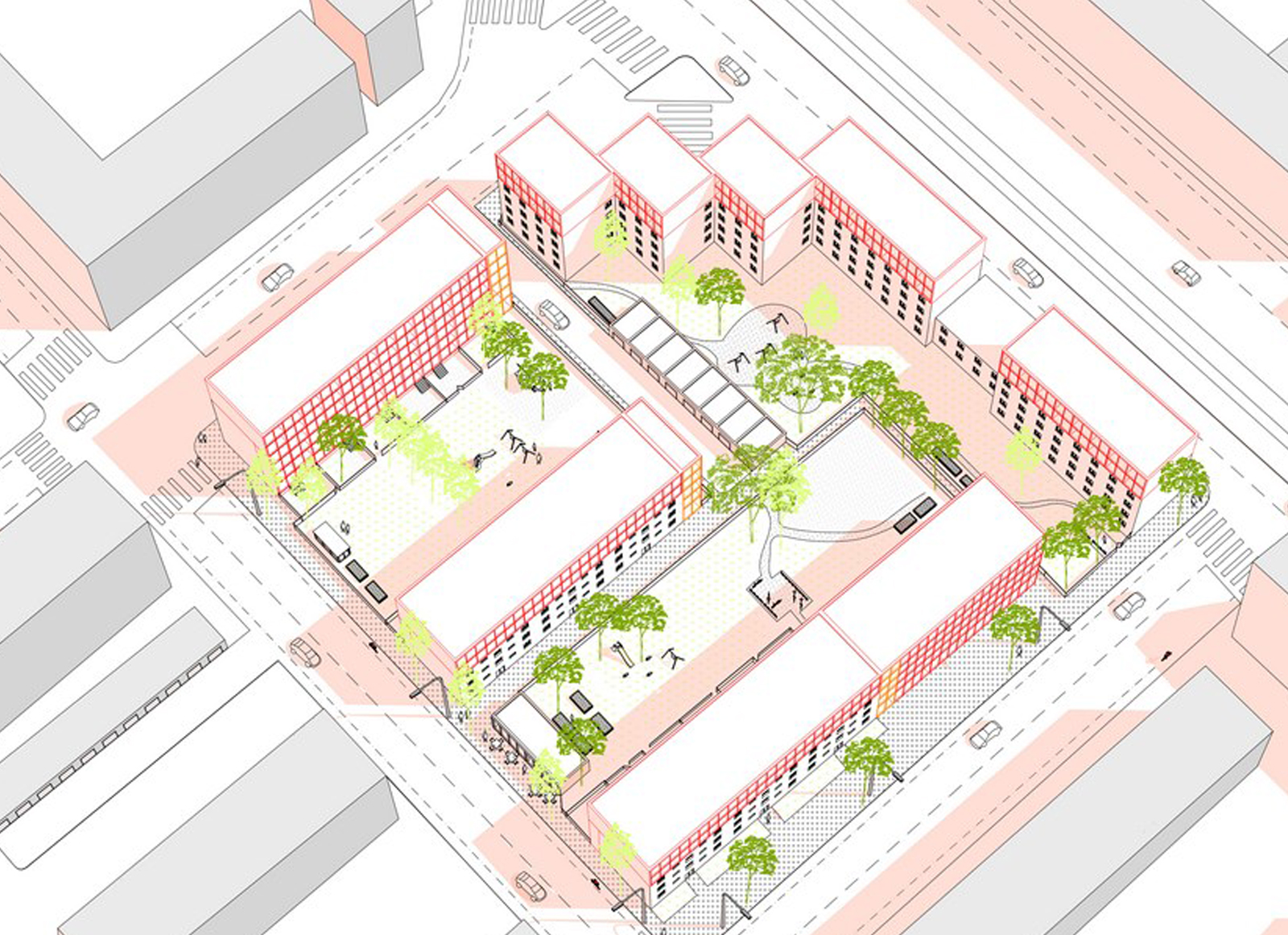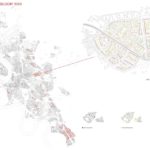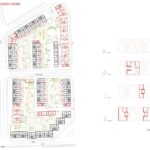Densify Housing Rows – Optimize Urban Space by Franziska Niepenberg | International Residential Architecture Awards 2019
The today ‘s requirements on our cities are enormous. The growth spurt challenges us to find concepts and new ideas how to bring affordable housing into existing structures. As part of the new ‘Civic Design‘ degree program at Peter Behrens School of Arts in Dusseldorf which positions itself at the intersection of architecture, urban planning and politics, we‘ve been looking for future-oriented strategic solutions for 75,000 new apartments in Dusseldorf.
In this course, we have dealt with the typologies of Dusseldorf. Here we have noticed the areas of the 50s to 70s by their conspicuous structural structure. These areas are dominated by housing rows and mostly belong to building cooperatives. The typology of these housing rows often does not fit into the surrounding structures – the areas are like ’islands’ in the city. After further analysis of these areas, we noticed that the open spaces between these housing rows are oversized and undefined, often they are not in use. In addition, the areas are usually outside the city centre and the connection is often not good. The quarters which are dominated by housing rows are pure residential areas and thus require a good connection to the surrounding area. The density of these inner-urban areas is low, they give us the chance to redefine and densify them. The implementation of the project is expected to continue until 2050. By 2050, some of the buildings will be up to the age of 100, so they will need to be rehabilitated. This is another and important reason for dealing with these areas of our cities. They were developed in a short time, due to the housing shortage after the war. Our planning is about optimizing the urban space of these areas and giving it a new lease of life. The housing rows shows typological and structural potential. Part of our concept is the sensitive handling of existing buildings and the well-thought-out integration of new buildings. The partial demolition of the existing buildings can not be completely avoided. The new structure will redefine open spaces, transform the homogeneous residential areas into attractive mixed areas with new public facilities, and expand the infrastructure in the process. By owning the building cooperatives of many areas, one often finds a homogeneous tenant structure. By integrating the new buildings, new tenant structures could settle and thus create a sustainable social mix. For an urban density of our areas, we have developed „recipes“ that apply to the housing rows. We have increased, widened and extended the housing rows. The existing ‘row‘ remains. The widening of the existing building, from 10 meters to 12 meters, which is placed as an independent structure next to the existing building, increases the interior of the existing housing. The new building complex, which adjoins the housing rows and thus extends the building, is accessed through arcades in order to provide the most economical development possible. The extended part of the existing building is also accessed through arcades. So these apartments, in contrast to the old apartments barrier-free. The character of the new building should be light and open in contrast to the existing housing rows. This combination characterizes our new areas and the new structure of the newly defined urban space.
With our concept we would like to bring the urban space of Dusseldorf back into our planning areas and combine the old with new structures. The topic of modernity can not be avoided today. We need to create housing and have developed a concept that responds to this and does not demand new spaces in the city. In 2050, the areas will need to be rehabilitated and then we must have solutions. These areas of modernity do not exist only in Dusseldorf. Our concept can respond to other areas of this kind and be an approach or an idea to counteract today‘s housing shortage.
International Residential Architecture Awards 2019
Winner – Category: Housing Concept
Architect: Franziska Niepenberg
University: Peter Behrens School of Arts
Project Location: Dusseldorf
Team: Lena Bach, Franziska Niepenberg
Country: Germany








